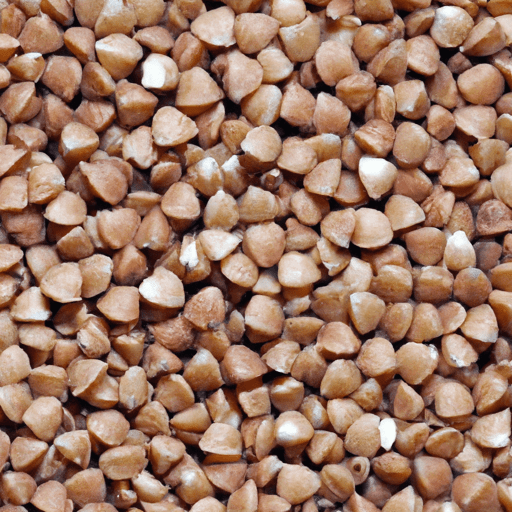Discover the Nutritional Powerhouse: Buckwheat
If there’s one ingredient that deserves a warm welcome into your kitchen, it’s buckwheat. Despite its name, buckwheat isn’t actually a type of wheat at all; it’s a nutrient-dense seed that has been cultivated for centuries. Buckwheat is not only versatile and delicious but also offers an array of health benefits. Today, we’ll dive into the world of buckwheat and explore its taste, common uses, nutritional value, and fascinating history.
Taste and Culinary Uses
Buckwheat possesses a unique flavor profile that is nutty, earthy, and slightly bitter. Its hearty taste adds depth to any dish it’s a part of. In terms of culinary uses, buckwheat flour is a popular choice for making pancakes, crepes, and noodles. The Japanese have famously perfected the art of making soba noodles, which are revered for their delicate texture and nutty taste.
Buckwheat groats, the hulled seeds of the plant, can be cooked and used as a substitute for rice or quinoa. They have a pleasantly chewy texture and pair well with roasted vegetables or in salads. Additionally, buckwheat can be ground into a flour to make gluten-free baked goods, such as bread and muffins.
Nutritional Powerhouse
Not only does buckwheat offer a delightful taste, but it also packs a powerful nutritional punch. Here are some compelling reasons to incorporate buckwheat into your diet:
1. Protein-Rich:
Buckwheat is an excellent source of plant-based protein, making it a fantastic option for vegetarians and vegans. With all nine essential amino acids, it provides a complete protein profile.
2. Gluten-Free Alternative:
For individuals with gluten sensitivities or Celiac disease, buckwheat is a fantastic alternative to wheat. This naturally gluten-free seed is a great option for baking and cooking.
3. Fiber-Loaded:
Fiber plays a crucial role in maintaining a healthy digestive system. Buckwheat contains high levels of dietary fiber that aids in digestion, promotes satiety, and supports overall gut health.
4. Mineral Bonanza:
Buckwheat is a rich source of minerals such as manganese, magnesium, copper, and phosphorus. These minerals play vital roles in various bodily functions, including bone health, energy production, and enzyme activation.
5. Antioxidant-Rich:
The seeds of the buckwheat plant are packed with antioxidants that help combat inflammation and protect against chronic diseases.
A Historical and Culturally Significant Crop
Buckwheat has a fascinating history that spans continents. Originating in Southeast Asia, it made its way to Europe in the 14th century and quickly gained popularity due to its adaptability and versatility. In Eastern Europe, buckwheat became a staple crop due to its ability to grow in harsh climates and its exceptional nutritional value.
In Japan, soba noodles hold deep cultural significance and are enjoyed both in everyday meals and during special occasions. Buckwheat’s resilience and high yield also positioned it as a crucial crop during periods of war and famine.
Final Thoughts
Buckwheat is a true gem in the culinary world, offering a distinct taste, remarkable nutritional benefits, and a rich historical significance. Whether you’re looking to experiment with gluten-free baking, explore new flavors, or boost your nutrient intake, buckwheat is a fantastic ingredient to add to your pantry. So why not embark on a journey of taste and health by incorporating this versatile seed into your cooking repertoire? Discover the wonders of buckwheat and let your culinary creativity soar!
Note: Despite its name, buckwheat may not be suitable for individuals with severe allergies to nickel, as it naturally contains trace amounts.
Origin:
- Buckwheat, also known as Fagopyrum esculentum, is a plant native to Central Asia and has been cultivated for over 8,000 years.
- It is believed to have originated in the region that now comprises Nepal, China, and Tibet.
Common Uses:
- Buckwheat is primarily known for its use in making flour, which is commonly used in pancakes, noodles, and various baked goods.
- It is a staple ingredient in traditional dishes from several countries including Russia, Japan, and many Central European cuisines.
- In addition to flour, buckwheat groats are used as a base for porridge, side dishes, and in salads.
- Roasted buckwheat groats, also known as kasha, have a nuttier flavor and can be used as a substitute for rice in various recipes.
Nutritional Benefits:
- Buckwheat is highly nutritious and is a good source of essential nutrients, including minerals such as magnesium, copper, and manganese.
- It is rich in dietary fiber, which can aid in digestion and promote feelings of fullness.
- Buckwheat is also a good source of plant-based protein, making it a valuable ingredient for vegetarian and vegan diets.
- It is gluten-free, making it a suitable alternative for individuals with gluten sensitivities or celiac disease.
Unique Properties and Historical Significance:
- Despite its name, buckwheat is not related to wheat. It is a pseudocereal, meaning it is not a grass but is used similarly to true cereal grains.
- Buckwheat has a distinct, earthy flavor and a slightly nutty taste, which adds depth to dishes.
- Historically, buckwheat played a significant role in many rural communities. It was a hardy crop that could thrive in poor soil conditions and colder climates, making it a valuable food source in regions with limited agricultural resources.
- In some cultures, buckwheat holds cultural and symbolic significance. For example, in Japan, soba noodles made from buckwheat flour are often eaten on New Year’s Eve as a symbol of longevity and resilience.
Please note that while buckwheat offers several nutritional benefits, it is essential to consult a healthcare professional or registered dietitian for personalized dietary advice.




Use the share button below if you liked it.
It makes me smile, when I see it.